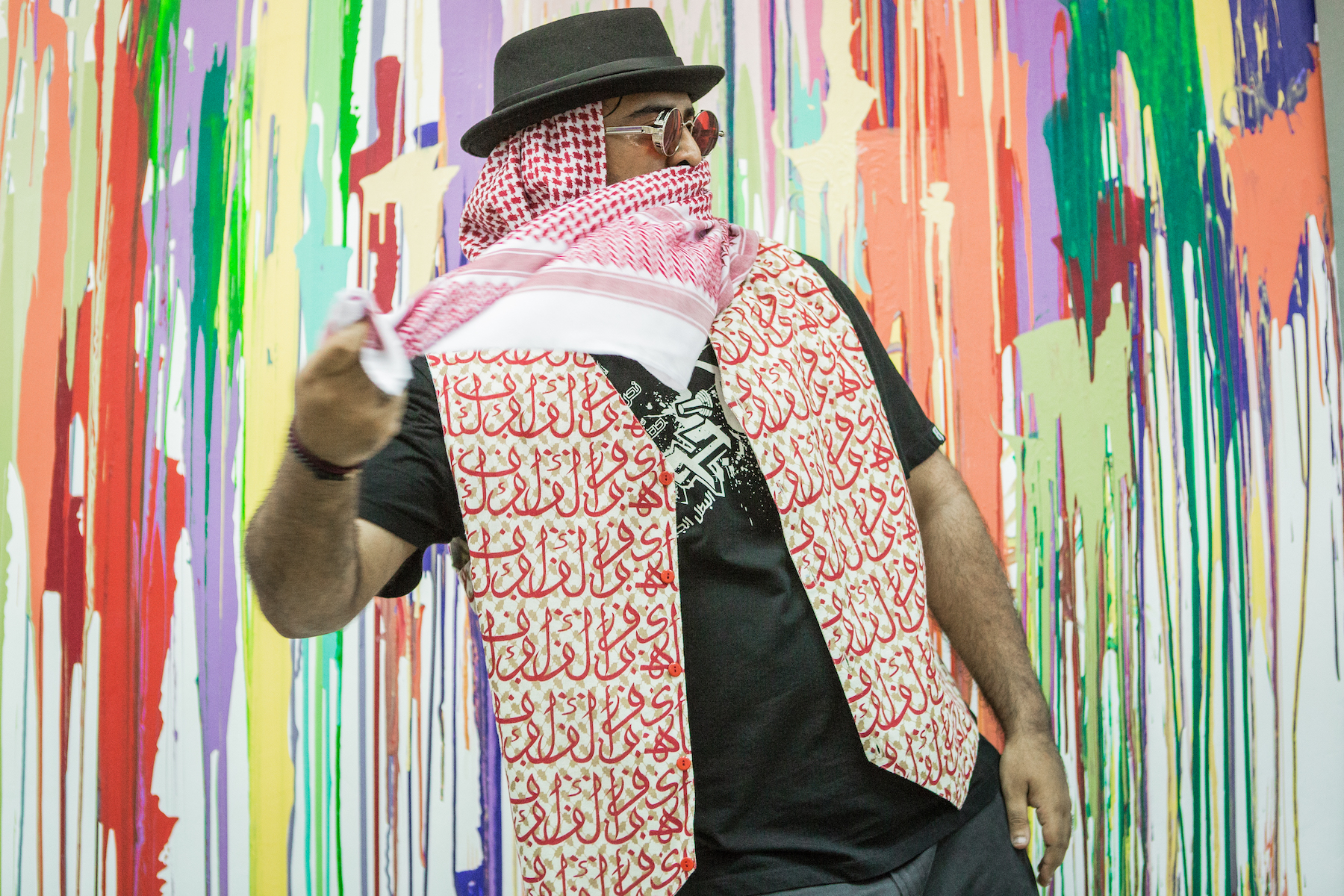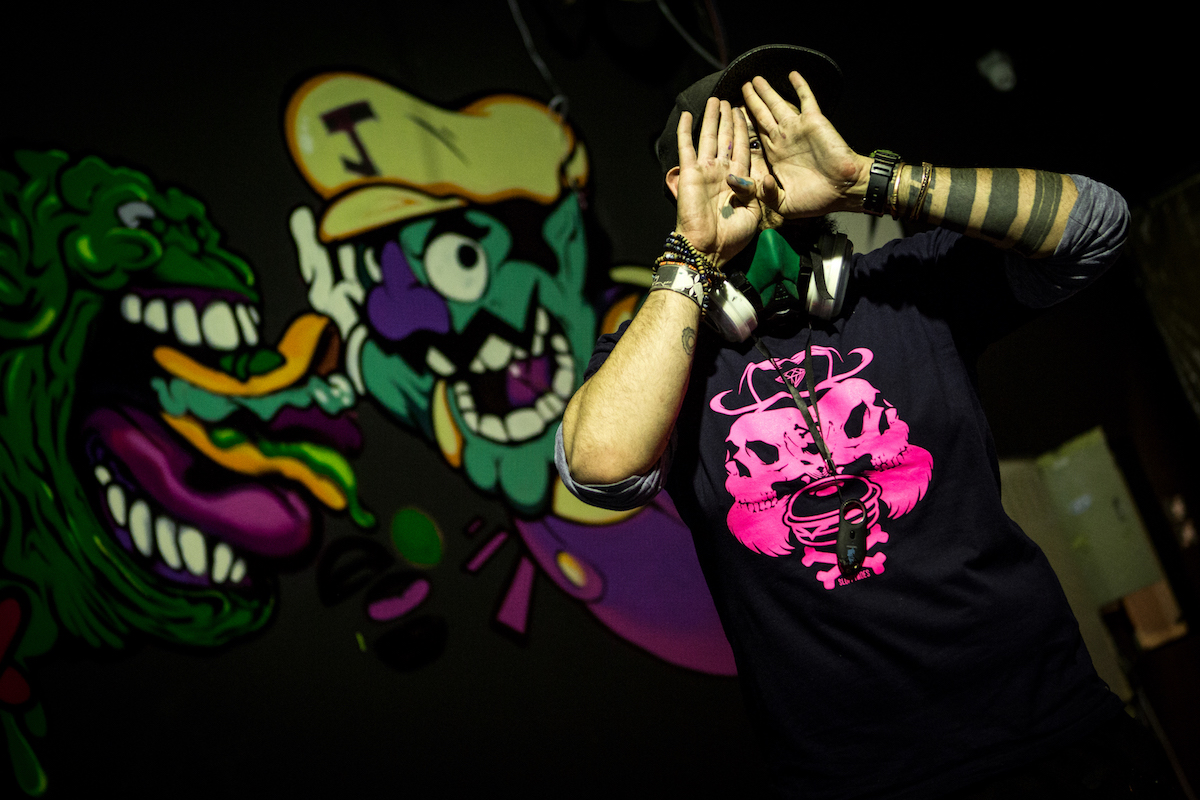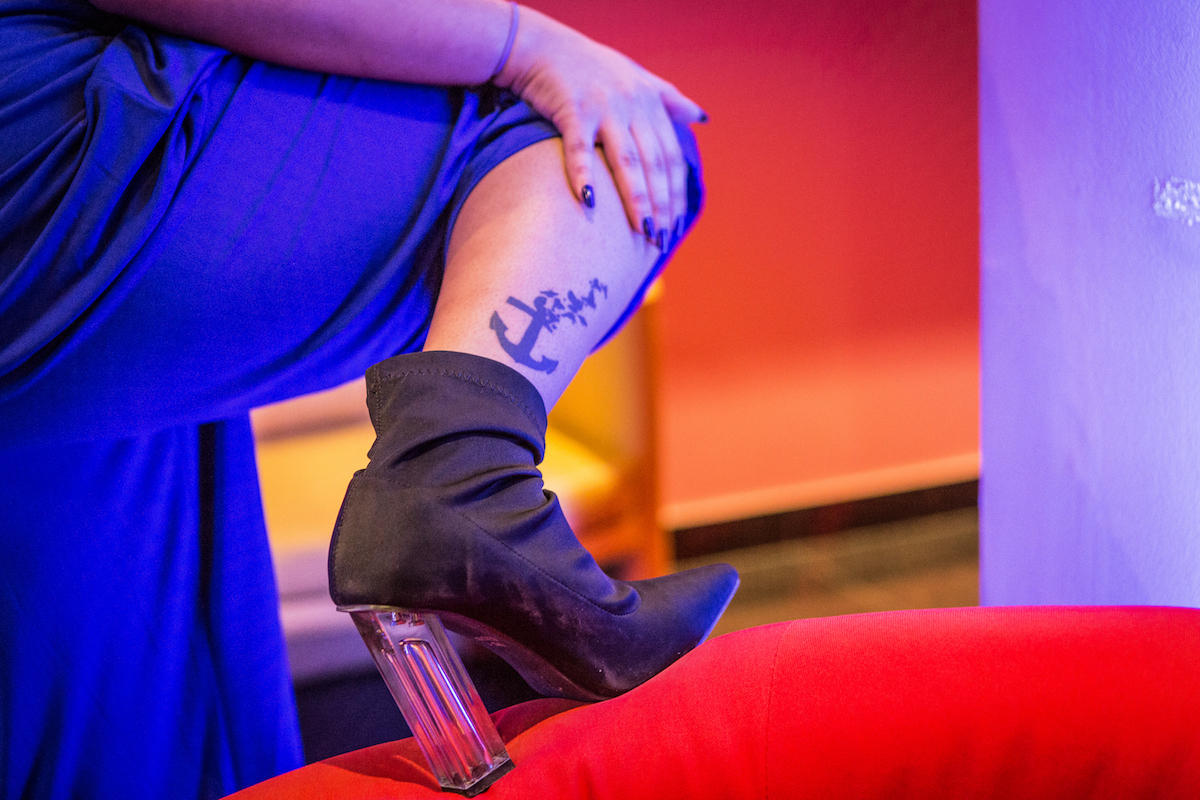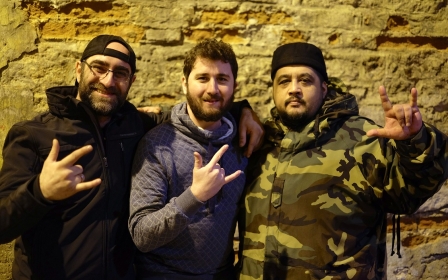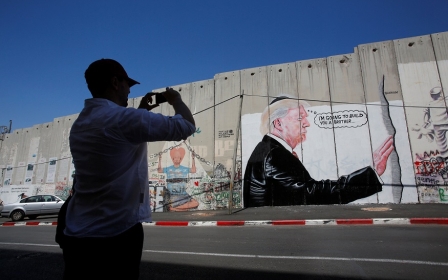Kuwait street style: Meet the breakdancers, rappers and graffiti artists
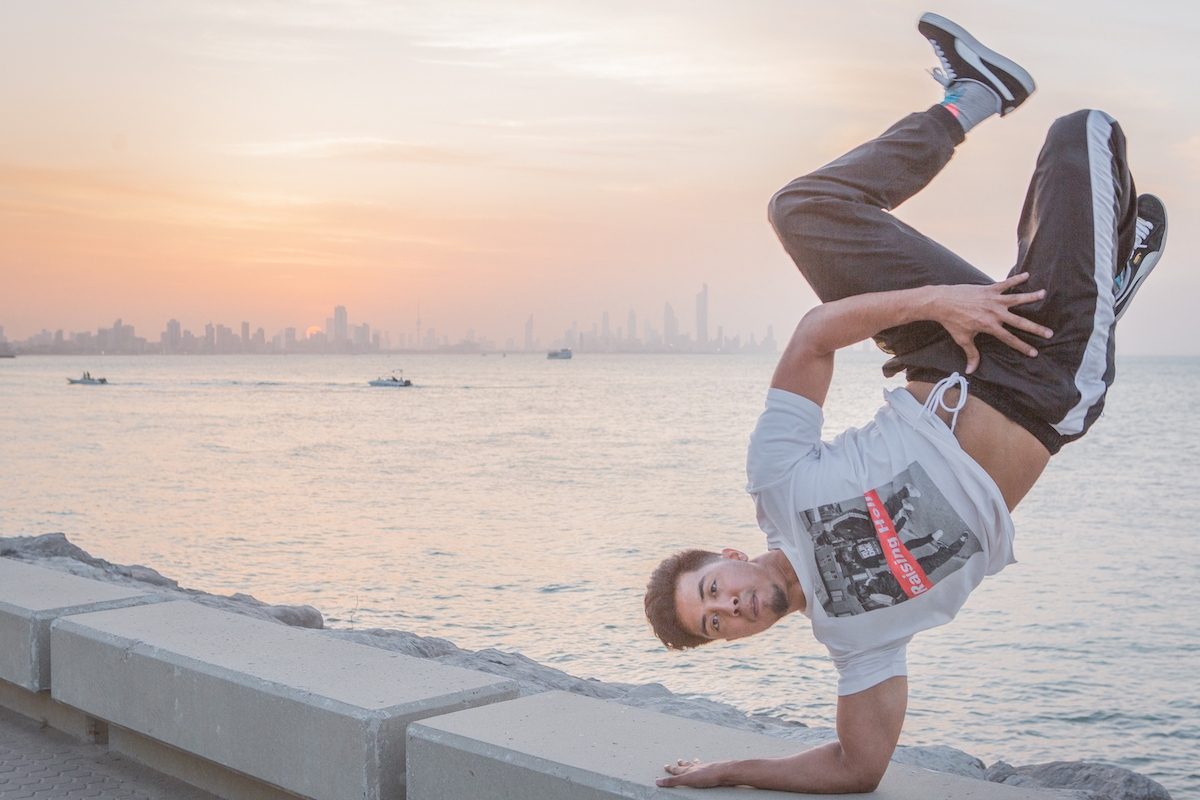
Moaath Salah, alias Psycho, breakdances at sunset on the corniche of Salmiya, Kuwait.
In the early 2000s, Salah, who was born from a Kuwaiti father and a Filipino mother, started dancing after watching the American dance comedy-drama You Got Served.
“At school, my Asian origins were mocked. Fortunately, dance has connected me to Kuwaitis who look beyond racial differences,” the 26-year-old said.
New MEE newsletter: Jerusalem Dispatch
Sign up to get the latest insights and analysis on Israel-Palestine, alongside Turkey Unpacked and other MEE newsletters
Once accused by Islamist conservatives of being “a satanic tool on a mission to propagate the western ideology”, arts have nevertheless gained momentum in recent years in Gulf societies, explains graffiti artist Abdullah Bukhamseenurban.
Street art has become trendy among liberal segments of Kuwaiti society, with cool cafes playing rap, fashionistas lining up to be photographed in front of street art and commercial videos featuring local breakdancers.
Disconnected
Yet Salah bemoans "the absence of bridges to connect traditional and Westernised Kuwaitis".
“Anything which is not traditional Kuwaiti dance will be associated with belly dance,” said Mohammed al-Eidani, alias Doss, who specialises in "popping", a form of street dance. He even believes that his manly looks have protected him from a society that "rejects effeminate dancers".
In a bid to highlight his Arab origins to an international audience, Eidani occasionally dances wearing the keffiyeh, a traditional Middle Eastern headdress. Unfortunately, that has led to aggressive comments on social networks from some conservative people who claim that “such a provocation is not acceptable”.
Identity crisis
Street artists have become a symbol of a young generation that is struggling to develop a distinctive hybrid identity that fuses traditional art forms with international ones.
“We face an identity crisis,” said Ali Altarah, a sociologist and former ambassador of Kuwait to UNESCO.
'In Kuwait, there is more acceptance for dance'
- Khadija Alsheikh, hip hop dancer
Kuwaiti music producer Khalid Almansour, alias Greyfish, has been working for years on “Arabic fusion”, a musical genre that mixes Western pop with Kuwaiti traditional percussive beats.
“Who would like to listen to a Kuwaiti playing Western music? What is the point? Arabic fusion is unique!” Almansour exclaimed.
Judgement
Twenty-five-year-old Bader al-Fajar, alias MLK, raps in American English, having been inspired by Dr Dre, Eminem and Justin Bieber.
“Unfortunately, we’re being judged for our physical appearance. If a cop spots me dressed up this way, he will pull me over in search for drugs,” Fajar said, claiming that he has personally been sent to jail because of his look.
According to Almansour, being Kuwaiti grants him the very same right to express himself just as conservative people do, as long as he does not unjustifiably bash Kuwaiti traditions.
“They don't own music. They don't own the beats. They don't own Kuwaiti percussions,” he said. Rather than mocking his cultural roots, Almansour believes he is taking them forward.
Changing perceptions
“When Pizza Hut opened its first restaurant in Kuwait, people got confused about the right way to eat it without Arabic bread. So, the American restaurant chain broadcast educational videos to teach people about pizzas. It's the same with graffiti, we have to explain what it is,” said graffer Mohammed Abu Hakmeh, alias Monstariam.
Kuwaiti graffers complain about how difficult it is to get the government to assign them a legal wall where they can paint freely.
“They just don't understand our point at all and ask why the hell do we want to draw on a wall,” Bukhamseen, alias Bufifty, told MEE. To change their perception, he meets with local authorities and shows them his portfolio so that they can see that graffiti is not about slang words but a fully-fledged art form.
All in the letters
Although most Kuwaiti graffers privilege Latin letters, Bukhamseen tries to blur the lines between those and Arabic ones, which are “much harder to draw”.
The turning point came in 2014 when he travelled to Dubai to graff the longest graffiti wall in the world, alongside 150 international artists.
“Western graffers vividly questioned our choice of Latin letters. Because it was about to be in the international game, we didn't know we could change the rules and go for Arabic letters in graffiti,” Bukhamseen said.
In order to reach "a better balance", Bukhamseen decided to study Islamic geometry and add Kuwaiti touches to his artistic creations. “I looked to incorporate a couple of prominent distinctive Islamic geometry forms,” the 26-year-old graffer said, proudly.
Since then, the originality of his pieces has attracted Western artists who were unfamiliar with Islamic patterns.
Resourceful and determined
Rapper Abdullah al-Shayea chose “Dinar” as a stage name “to represent the country since dinar is the currency in Kuwait”. A musician since 2008, he lamented the overwhelming administrative procedures required to set up any concert in the emirate.
To bypass it, Dinar organises concerts indoors. “We build a small stage and dance all over, but if the police come, nobody will sleep at home tonight.”
According to sociologist Ali Altarah, many young Kuwaitis act like Westerners. “Those kids are sometimes lost: should I strengthen my Arab Muslim identity, the Kuwaiti one or a global lifestyle? Kuwaiti society faces countless contradictions and social issues,” he said.
Saudi hip-hop dancer Khadija Alsheikh, 26, relocated to Kuwait in 2018, attracted by "great vibes" and "the abundance of professional opportunities".
“In Kuwait, there is more acceptance for dance. It’s not seen like something provocative, illegal, or a way to disrespect someone,” Alsheikh told MEE, referring to Saudi Arabia, where the of lack public spaces to practice her skills forced her to teach dance in private places before migrating.
Although Kuwait prohibits dancing in public spaces too, Mohammed al-Eidani believes that the country remains a major arts centre in the Gulf region, whilst the UAE stands “as a place to showcase your creations”.
However, the "abroad-syndrome" still prevails.
“To be looked at highly, you must achieve something prestigious abroad before the community will accept you,” he said.
Middle East Eye delivers independent and unrivalled coverage and analysis of the Middle East, North Africa and beyond. To learn more about republishing this content and the associated fees, please fill out this form. More about MEE can be found here.



